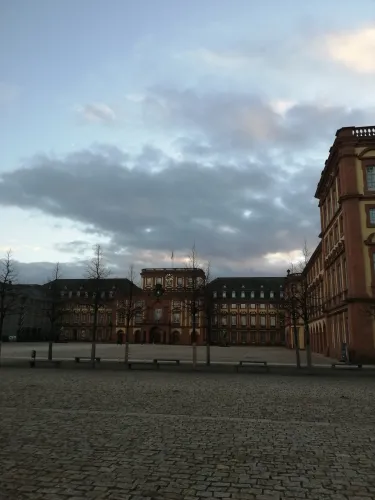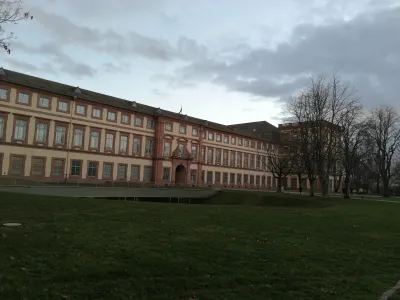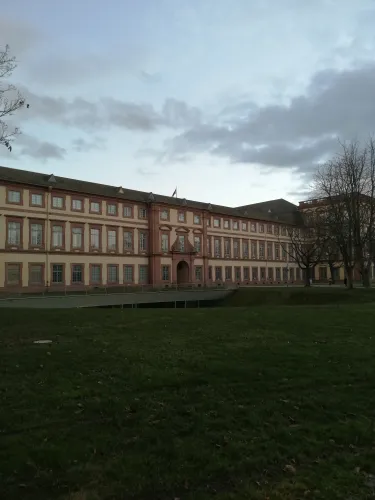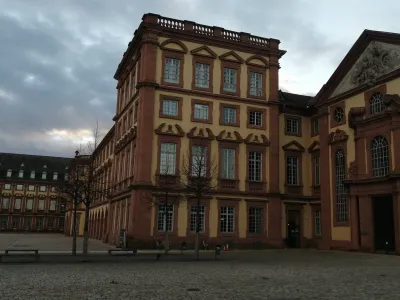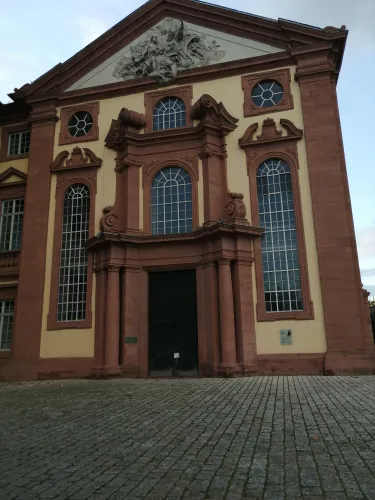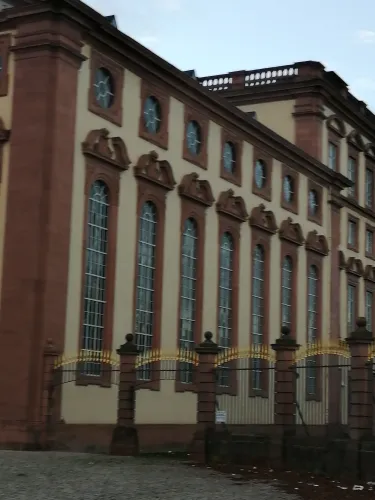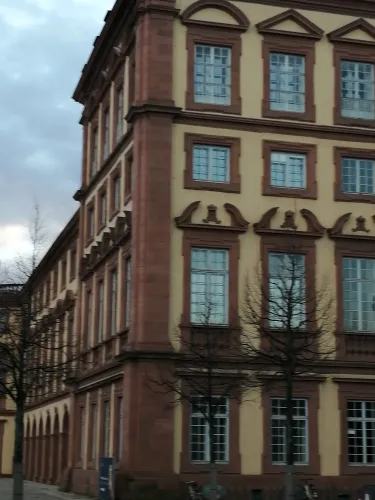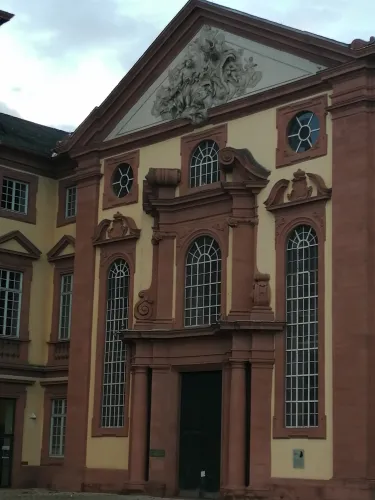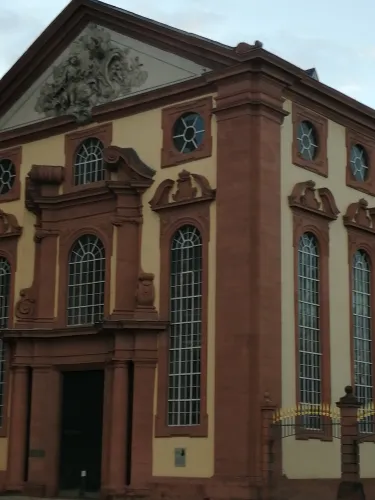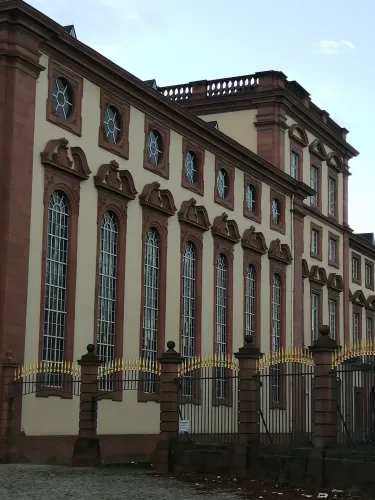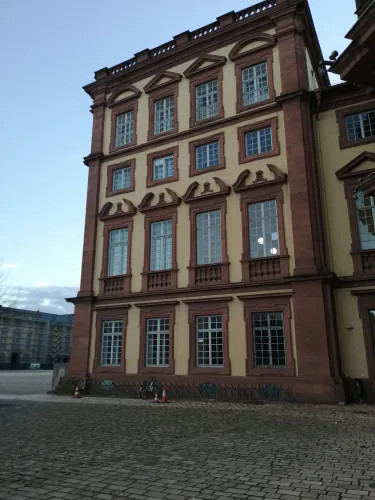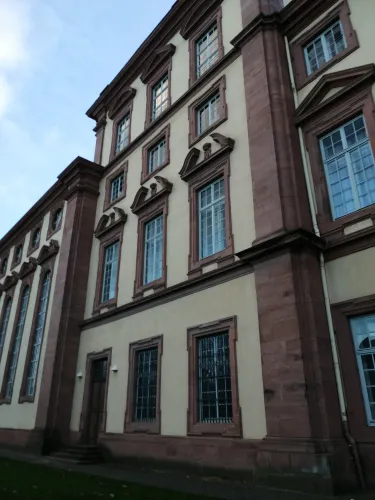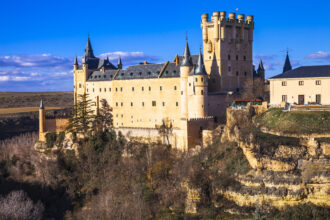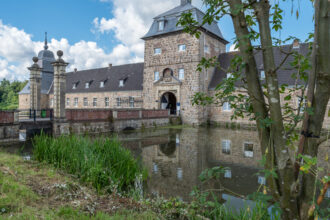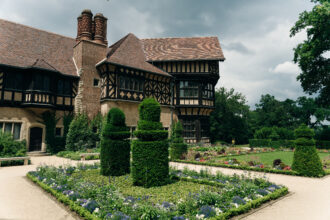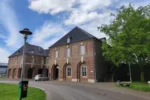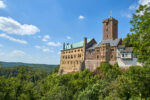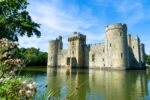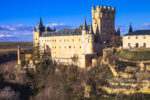The largest Baroque palace in Germany and the second largest in Europe is Mannheim Palace on the edge of the squares. Mannheim, a city in southern Germany located on the Rhine and Neckar rivers, is nicknamed the “city of squares” because its city center is laid out in a grid pattern of blocks. Mannheim has a total of 144 such squares, stretching between the palace and the Neckar River, as well as the water tower and the Kurt Schumacher Bridge. The city owes these squares to Elector Frederick IV of the Palatinate, who had a fortress with a citadel, known as the Friedrichsburg, built in the village of “Mannenheim.” On January 24, 1606, the town connected to the fortress was granted town rights. The characteristic grid system of streets dates back to the Dutchman Barthel Janson. According to legend, this checkerboard pattern also served as a model for Manhattan, a borough of New York City. The landmark of the square city of Mannheim is its 450-meter-long palace, which stands on an area of 6 hectares. The foundation stone for this imposing palace was laid on July 2, 1720, by Elector Carl Philipp. Construction began according to the plans of Johann Kaspar Herwarthel, based on designs by Louis Remy de la Fosse. After his death in November 1720, Jean Clemens Froimon took over the construction management. After that, renowned architects and master builders such as Gulliaume d’Hauberat, Alessandro Galli da Bibiena, and Nicolas de Pigage took turns at the helm. In 1760, after almost 40 years of construction and costs of 2 million guilders, the Baroque-style palace complex was largely completed, with exactly one more window than the Palace of Versailles in France. The palace, with its huge forecourt, the so-called courtyard of honor, is divided into a central building, the striking Corps de Logis, and the east and west wings. The east wing of the main building contains four state rooms, which form the imperial quarters, an apartment for state receptions. In the west wing, the electoral opera house and ballroom were built by theater architect Alessandro Galli da Bibiena between 1737 and 1742. In addition, the palace includes numerous other buildings for the court, administration, and judiciary. A palace church and a Jesuit college are also attached to the palace. Under Elector Carl Philipp, the palace was to become a cultural center of European significance. After his death, his grandnephew Carl Theodor became elector at the age of 18. He was a great patron of science, research, art, and music, and in the spirit of Carl Philipp, he turned Mannheim into a “court of the muses” that was known throughout Europe. After Carl Theodor inherited the Electorate of Bavaria in 1777, he moved to Munich with his court. The palace experienced its second cultural heyday in the 19th century under the rule of the House of Baden. Between 1806 and 1811, it was home to the hereditary ducal couple Carl von Baden and Stéphanie de Beauharnais, an adopted daughter of Emperor Napoleon. After her husband’s death, she chose the palace as her widow’s residence in 1818. With her death in 1860, the court at the palace was dissolved. In 1918, the palace finally became the property of the Free State of Baden. During World War II, the palace was almost completely destroyed, and reconstruction initially seemed impossible. However, gradual reconstruction of the castle began in 1947 under the direction of city planning director Rolf Becker, and was completed on March 28, 2007, with the inauguration of the new castle museum in the Corps de Logis. Today, the castle is also home to the University of Mannheim. In addition, the Mannheim District Court is housed in part of the west wing. Cultural events are regularly held in the Knights’ Hall and the courtyard. In the Knights’ Hall, which measures 360 square meters and can accommodate 160 people, young couples can get married in a civil ceremony and celebrate a princely fairytale wedding. The east wing is currently being renovated and the catacombs and university auditorium are being repaired. The Baroque Mannheim Palace is a fascinating cultural asset that has been converted into a true “citizens’ palace.”
